Steam
Locomotives of India~ the
complete site on Indian steam
Wankaner
- the last bastion
Photographs
and content - Dileep
Prakash
Worldwide railway systems are retaining
and reviving some of the steam locos. India, however, is still realising the
beauty of steam. India has discontinued, rather dieselised, most of the sections
running on steam in the 1990's. The Indian Railways have recently woken up to
the charm of the steam locomotive. The last bastion of steam was the Wankaner
section of Western Railway.
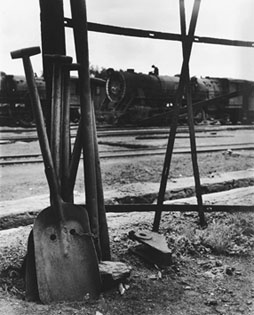
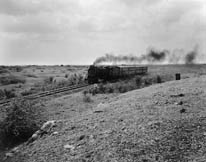
Steam
had been an integral part of childhood. From Ajmer (one of the biggest steam
loco yards in India) the Mayo Special brought me from school to Delhi four times
a year for 9 years. It was always pulled by a steam engine. I
still remember the coal bits that would wander into my shirt pockets and my
scruffy hair by the end of the 16 hour journey. We used to occasionally
steal a ride on the footboard of the YP watching the fireman stuff coal into
the boiler and the driver pull the whistle. However, as the years passed these
memories of steam gradually ebbed. It was while watching a BBC programme on
India, which showed some excellent footage on steam locomotives, that suddenly
refreshed my childhood experiences of steam. The hisses and the puffs, the whistle
and the chug and of course the bits of coal. That's when I got 'steam fever'.
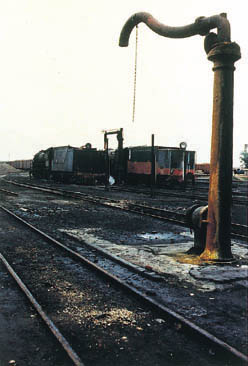
The
Indian Railways is a very difficult organisation to access information. From
when I started my hunt for steam in India and to the day I finally got to experience
it, it took me almost what it takes a human to produce a baby! Well after having
done all the research I could, I was headed for Wankaner in the Rajkot division
of Western Railway with 8 copies of the permission letter in hand!
After a super-fast over-night journey on the Ashram Express to Ahmedabad I boarded
the Bhopal-Rajkot Express for Rajkot enroute to Wankaner. It was a long 3 hr
journey when I suddenly saw smoke and jumped at the sight of Wankaner. There
they were the last few (16 in all, 9 working) YG and YP class steam locos made
by TELCO in the late 1950's. All waiting to be shot. The
sky was overcast and a strong breeze blowed away the steam and smoke from the
engines filling my nostrils with the age -old aroma of coal and steam.

I
went straight to the drivers' shed. It seemed to be instinctive (from the experience
of school days). There I got the details and future of the steam in Wankaner.
"The rail-bus will be here in a month and the goods operation is going to be
blocked in the next few days" said an old driver. Phew !, I am really lucky
to have made it to the last bastion of steam in India. The Darjeeling and Ooty
trains are the more touristy steams and may not close down so soon. But this
is the last place to have general goods and passenger movement on steam locos.
The older staff, the drivers, firemen and linemen swear by steam. They refer
to the engines as 'power'. "This is what earned the money for the Indian Railways.
And you see the emblem of the IR it has a steam loco on it. If you put a diesel
or an electric engine there it will not have any impact or power that the steam
engine has," says Ahmed whose last 3 generations have been drivers for IR.
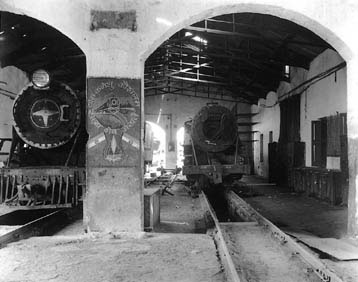

The
track from Wankaner connects the broad guage main line that runs from Gandhidham.
It goes through Makansar, Rafaleshwar, Morbi (which was, till independence,
the 'Morvi State Railway'), Dahinsara and finally Maliya Miyana at the mouth
of the Little Rann Of Kutch.
The ride to Morbi is quite exciting with the track meandering around the shallow
hills that occasionally crop up along the route. I wait for the 7.15pm loco
to Morbi after shooting the down train from a small hill (the camera almost
got blown off by the 40 kmph wind!) about a kilometre from Rafaleshwar.
The station at Rafaleshwar seems almost as if it is in no man's land. A strong
cool breeze blows coal bits that my hair has collected since the steamy and
smoky morning of documenting steam. And except for the mellowing tweeting of
birds the only other faint sound is of the gatekeeper's radio as he tunes into
some Tamil songs on his radio and seems to enjoy himself. It can get quite lonely
manning a small gate crossing at a place like Rafaleshwar. The lamps to be placed
at the gate still run on kerosene and look quite antique.
The gateman feeds the sparrows, pigeons, and doves that come in droves to peck
and drink water. The railway station is a cool open shed supported by steel
gurders made by 'Dugree' in 1927. The wrought iron benches are also of the same
antiquity. Their wooden planks smoothened by the wind and generations of human
touch. The grey paint on the gurders has cracked and looks like lichens on a
rock. The sleepers below the iron rail have worn into earthy rock looking creatures
and so has the wood of the benches. The feeling is
of a place that has gone through eons of aging and will soon die to be born
as an ugly concretized 'modern' vista of rail civilization. The sweet
whistle of the engine will soon be gone. Probably much before this writing reaches
the press. As the weak sun goes lower into the horizon the distant cries of
a jackal fill the air. The steam 'power' can be heard from a distance as it
is carried in with the wind.
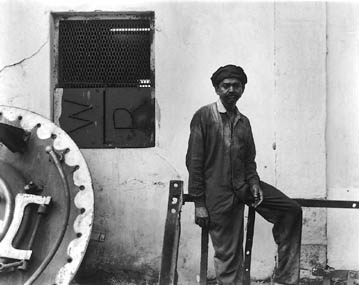
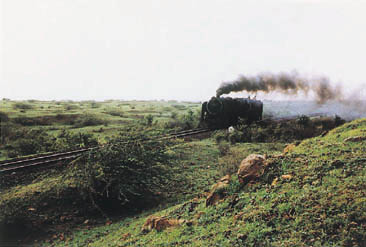
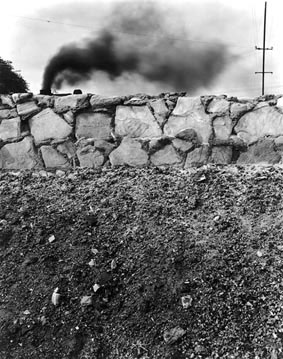
Morbi
is a dirty developing town with hundreds of pigs, autorickshaws and trucks that
move about the town spewing fumes and dust. There is a large temple at Morbi,
which I only saw from the outside. It is by a river very near the railway station.
The railway station is beautiful. The terrace is even better. It seems to have
been built by the Maharaja of Morbi some 200 yrs ago for his private state railway
that operated here. I stayed in the retiring room,
which was huge with old shisham furniture, and a four blade huge fan that moved
as in the good old days at Mayo. Infact that entire first floor of
the station was so much like school. Having got sick of Gujarati food I decided
to try Friend's Food as suggested by the foreign travellers which was not so
good and quite expensive for a budget traveller.
The journey from Morbi to Maliya Miyana is quite disheartening. The entire way
is being broad gauged and there is hordes of material lined up on both sides
of the track. However, peacocks abound and come very near to the hissing and
panting steam trains. They seem to be used to the sweet sounds the steam locos
make. Anyone can guess what will happen to them once the diesel brays out its
honk! There is acute water shortage after Dahinsara. So the train has to carry
both drinking water for the villages enroute and water to feed the engine at
Maliya Miyana. At Maliya the situation is even worse - the engine has to be
filled with buckets. It takes a good 5 people about 2 hours to satiate the YG's
thirst enough to get it back to Dahinsara.
At
Maliya the lazy Station Superintendent refuses to issue me a ticket back to
Morbi. He can't even figure out the permission letter from the railways that
I show to him. The ticket has to be bought on the train where a travelling ticket
clerk cum guard opens his ticket pandora's box and doles out tickets (all within
Rs. 5) to the entraining passengers. A Bengali family has travelled all the
way from Calcutta to see the eclipse. But to all our dismay the sky was overcast
heavily. A group of labourers from Andhra, working on the broad-gauge and bridges,
boarded and sat with me. The whole family works and travels together. Only one
man knows Hindi. He says he's been all over the country and picked up several
languages in the bargain.
Is
this the end...
Sadly so....










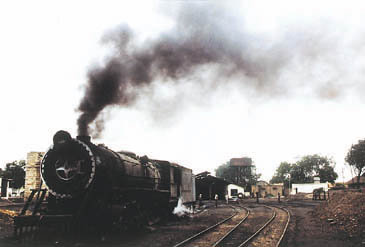
![]()